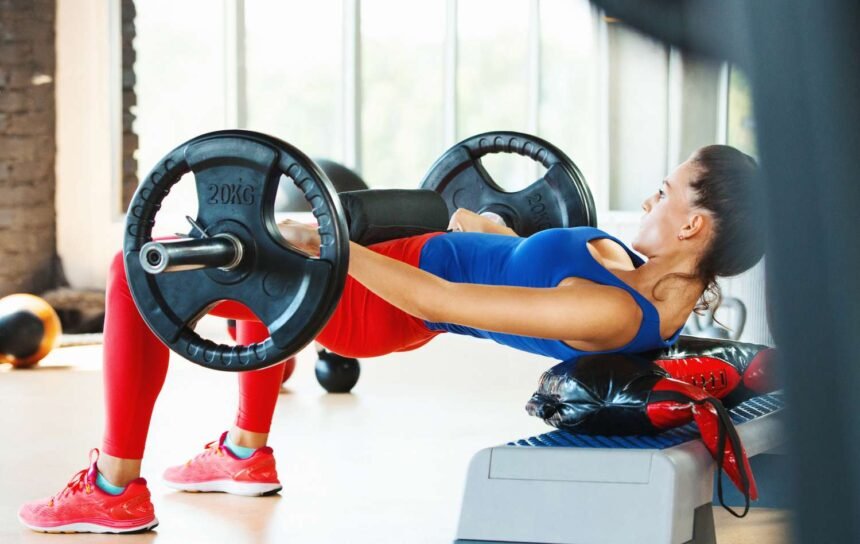How to Do a Hip Thrust: Proper Form, Variations, and Common Mistakes
The hip thrust is a powerful exercise that primarily targets the gluteal muscles, making it a top choice for those looking to build a stronger and more toned lower body. Unlike the standard glute bridge, the hip thrust is typically performed with a barbell, allowing for greater resistance and muscle activation.
What Is a Hip Thrust?
A hip thrust involves elevating your upper body on a bench while lifting a weighted barbell using your hips. This exercise effectively engages the glutes and hamstrings, promoting better hip extension as your hips move from a flexed position to a fully extended one.
How to Perform a Hip Thrust
To execute a proper hip thrust, you’ll need a weight bench and a barbell:
- Setup: Start by sitting on the floor with your upper back resting against the bench. Your knees should be bent, feet slightly wider than hip-width apart.
- Position the Barbell: Place the barbell across your hips, holding it steady with your hands. Consider using a pad on the bar to protect your hips.
- Lift: Squeeze your glutes and push the barbell upwards until your hips align with your shoulders and knees. Keep your core tight and maintain a slight chin tuck.
- Lower: Slowly lower the barbell until your hips are just a few inches off the ground, then repeat.
Benefits of Hip Thrusts
Hip thrusts are essential for building lower body strength and power:
- Increased Power: The hip thrust keeps tension on the hip muscles throughout the entire movement, making it more effective than some traditional lower-body exercises like squats.
- Safer Alternative to Squats: For those with shoulder, neck, or lower back issues, the hip thrust offers a safer way to strengthen the glutes without placing strain on the upper body.
Common Hip Thrust Variations
- Glute Bridge: A simpler version of the hip thrust performed on the floor, ideal for beginners.
- Dumbbell Hip Thrust: Use dumbbells instead of a barbell for added flexibility and control.
- Banded Hip Thrust: Add a resistance band around your thighs to engage the outer glute muscles.
Avoid These Common Mistakes
- Incorrect Foot Placement: Ensure your feet are properly positioned to maximize glute activation and avoid overworking the quadriceps.
- Lazy Neck: Keep your chin tucked and avoid arching your back to prevent spinal strain.
- Incomplete Extension: Make sure to fully extend your hips for the most effective workout.
- Rushing the Lowering Phase: Control the descent to maintain muscle engagement and get the most out of each rep.
Safety Tips
If you have any back or hip issues, consult a healthcare professional before attempting hip thrusts. Also, avoid hyperextending your spine and use equipment as intended.
By mastering the hip thrust and its variations, you can significantly enhance your lower body strength and achieve your fitness goals.















